Bobby Smyrniotis’ reign at Forge FC is the stuff of legend.
The Canadian Premier League has existed for five years, and Forge has claimed four North Star Cup titles, which goes to the playoff champion. The lone year that they did not win the championship, Forge was still a finalist and finished top of the table at the end of the regular season.
It’s the kind of success that defines an era, much like Real Madrid becoming synonymous with the Champions League or Bayern Munich as the figurehead of the Bundesliga.
That’s the type of success Forge FC has experienced under the leadership of Smyrniotis.
He’s a manager whose profile is on the rise. With John Herdman moving on to Toronto FC in MLS, the Canadian men’s national team job is open and waiting for a top Canadian coach. To no one’s surprise, Smyrniotis is heavily linked with the job. Given that Canada is one of three hosts for the next World Cup, should the rumours come to fruition, it may be too good an offer to turn down.
This tactical analysis will show why Smyrniotis is a manager to watch and give insights into his tactics. This analysis will focus first on his side’s structural preferences and then evaluate key features of his attacking and defensive philosophy.
Team shape and key structural emphasis
Smyrniotis has an interesting approach. He’s certainly not married to any one system, using both a 3-4-1-2 and a 4-1-4-1 over the course of the season. The split between the two saw the back four being more prominent early in the season and the three back at the tail end. There were even some games where the team started in one system but then changed to the other.
The flexibility of the system shows. The priority was principles rather than formations. Forge was one of the top teams in possession and had the best xGA in the league at 28.8. Structural integrity was fundamental for Smyrniotis’ side. Their rest defence made it difficult for opponents to counterattack and made for quicker transitions to the counterpress.
Looking at the basic structure later in the season, the setup was a 3-2-5 in possession. The 3-2 at the back offered security centrally while positioning the wide centrebacks to contest attempted outlet passes into the wings.
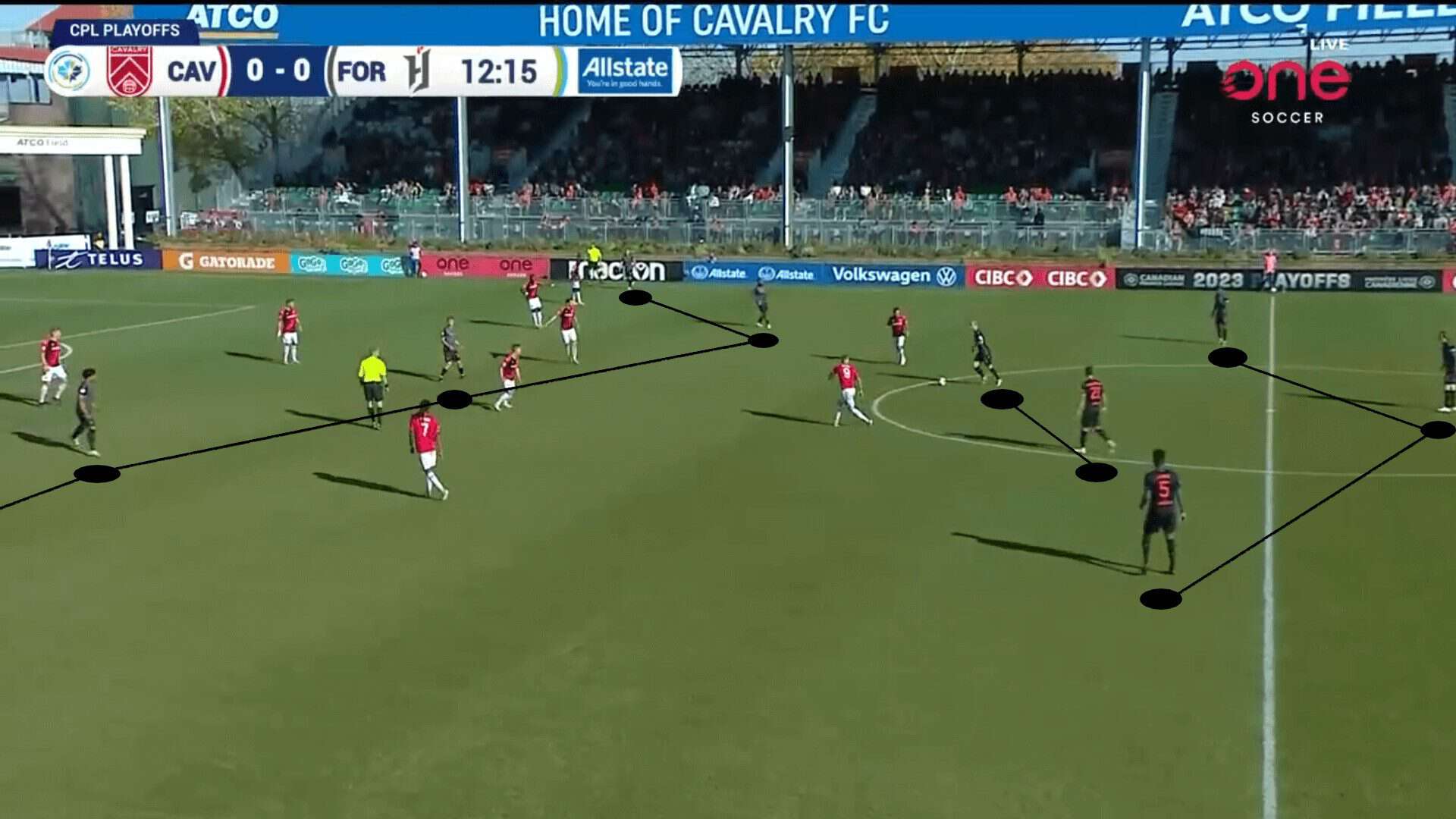
In that third line, we see the orientation of the wing-backs and the three highest players. Once possession was settled, the wing-backs often took up the highest positions while the three central players moved between the high points of the formation and the gaps between the lines. Those central creators had freedom to play off of each other and check into spaces of midfield while the wing-backs looked for opportunities higher up the pitch.
The team’s heat map shows the areas of influence. The wings, and especially the right-hand side, are especially prevalent. Wing progression is vital for this team, as is the playmaking ability of the wide centre-backs.
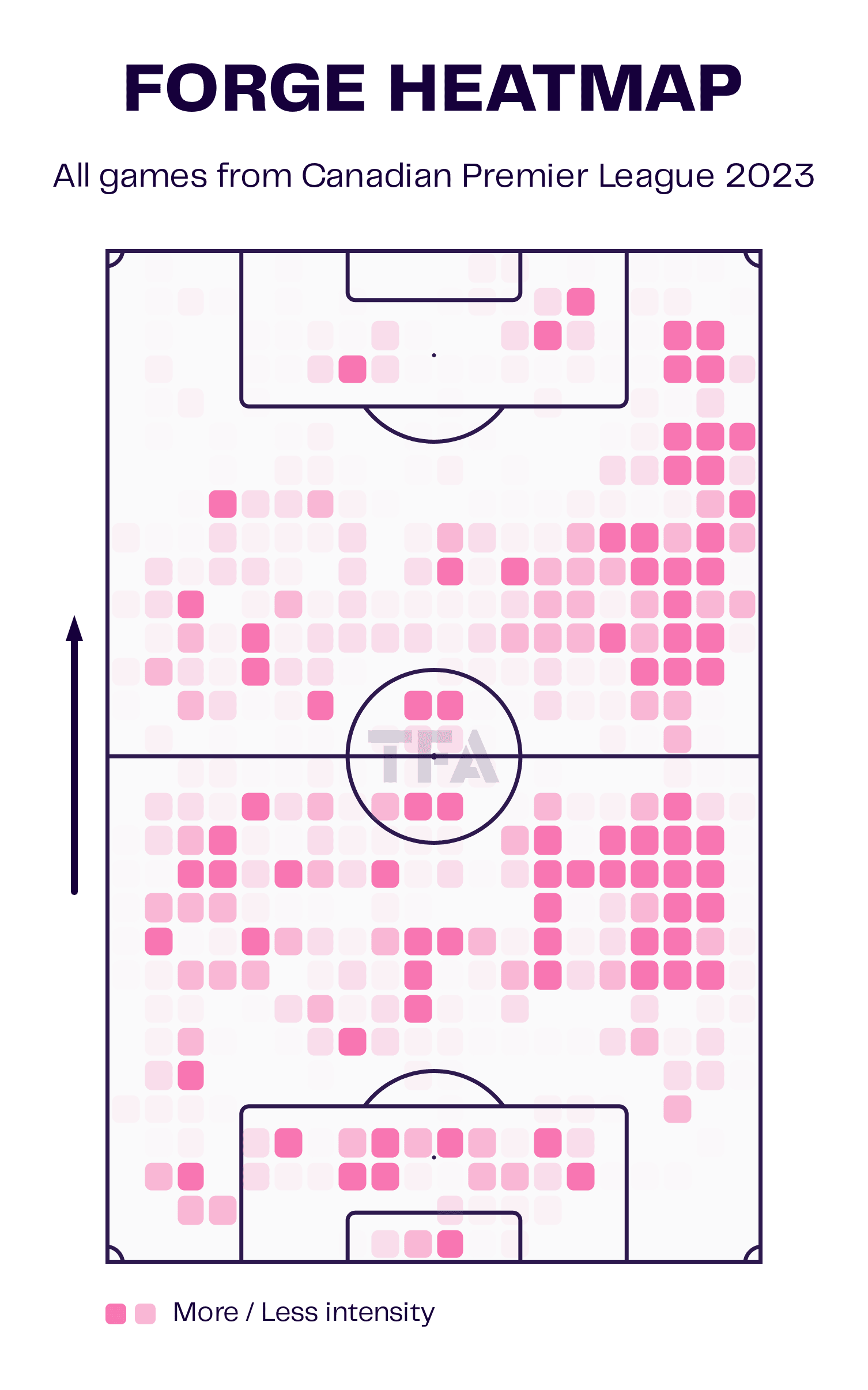
The ball progression map shows a very similar outlook. Once in the final third, there’s a heavy emphasis on progression through the wings.
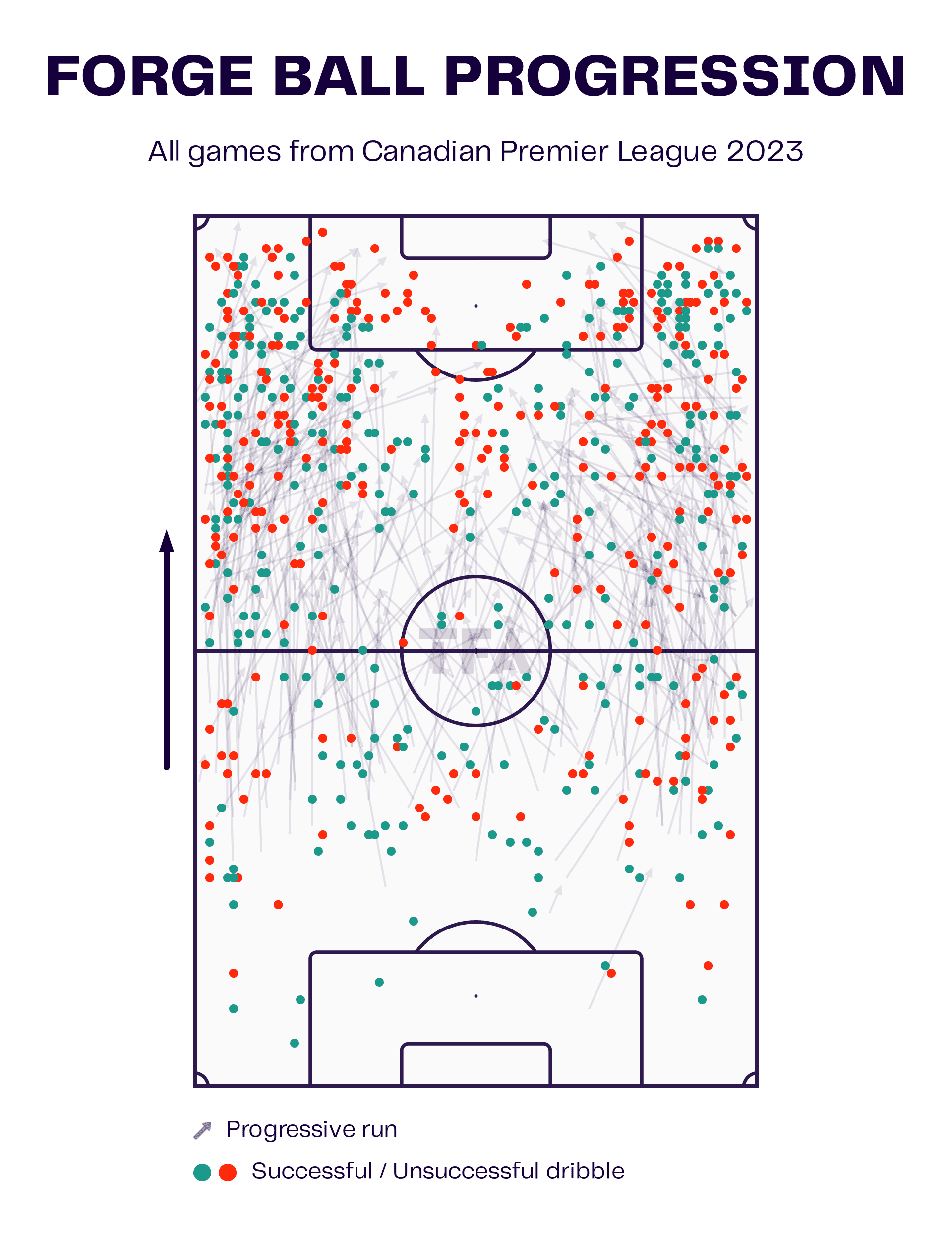
Crosses were very important for this Forge side, which is something we’ll cover in more detail in the next section. As we move to their attacking tactics, especially the importance of the high overloads and the significance of the wing-backs, we’ll touch on crossing in more detail.
The importance of high overloads
The five deepest players in the system are responsible for ball retention and progression into that forward line. There’s also that element of setting the tempo, determining when to attack the opponent at a higher intensity and when to settle for slower advancement while creating opportunities higher up the pitch.
Those opportunities in more advanced positions come down to the movements of the five players in that highest line. As mentioned in the previous section, the wing-backs will take high and wide positions. They are not only the width providers but also set the height of the attack. By engaging the opposition’s outside-backs or wing-backs, they intend to steal meters in terms of height and widen the gap between the opposition’s backline in midfield. That creates more room for the three central players to move into.
Looking at this example against Cavalry, space between the lines opened up centrally, allowing Terran Campbell to receive and turn towards the left wing, connecting with Kwasi Poku. The switch of play allowed Forge to progress at the pitch with a 2v2 in the wing.
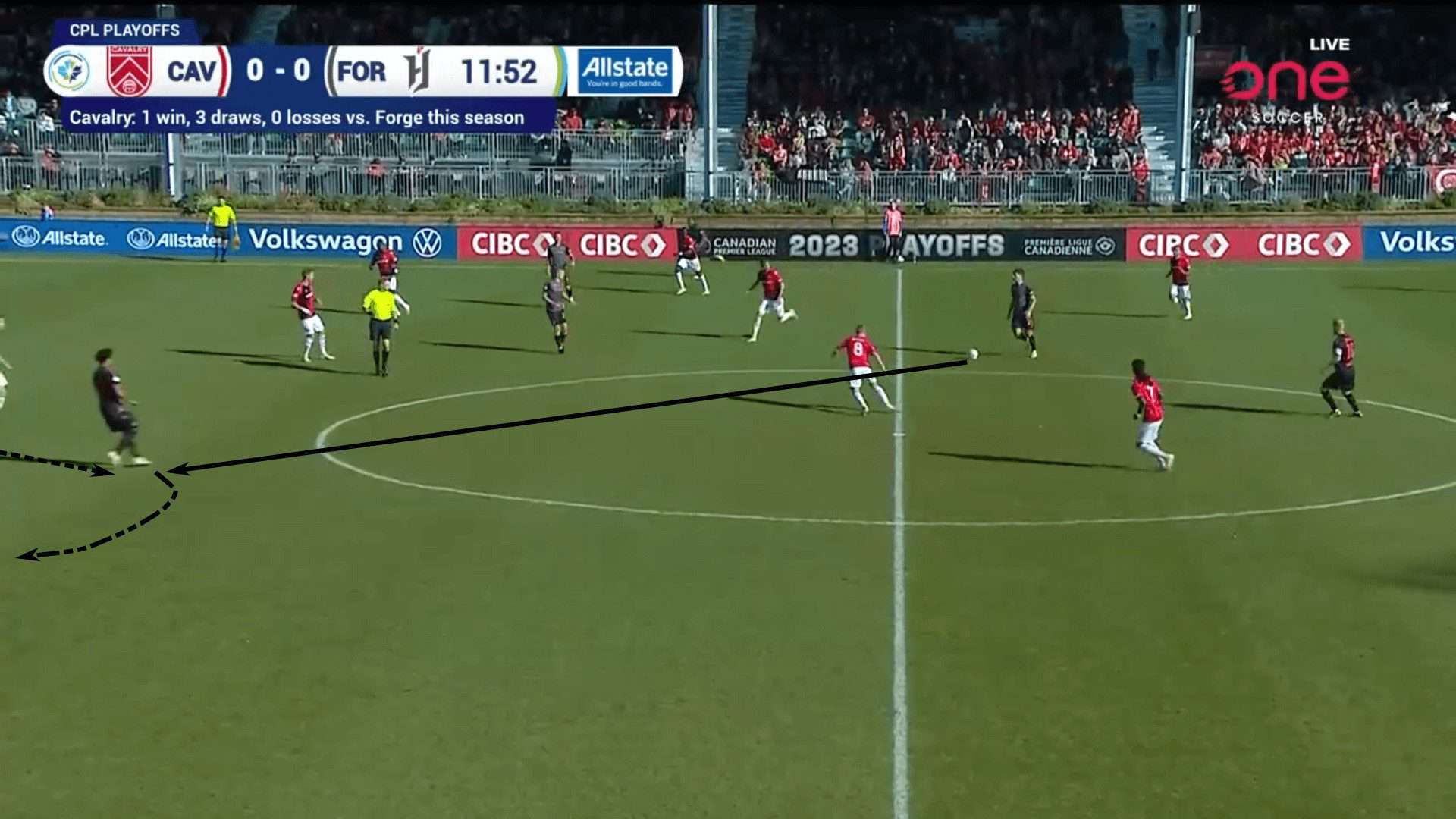
As Forge moved into the final third together, the wing-backs played an essential role in moving off of the left-centre and right-centre attackers. As those players checked into midfield, the wing-backs offered a run in behind if the defender followed. That’s exactly how Forge found their equaliser against Valour. A gap emerged in the opposition’s backline, queuing the through-ball and negative cross at the end line—a simple yet effective setup, leading to a crucial goal.
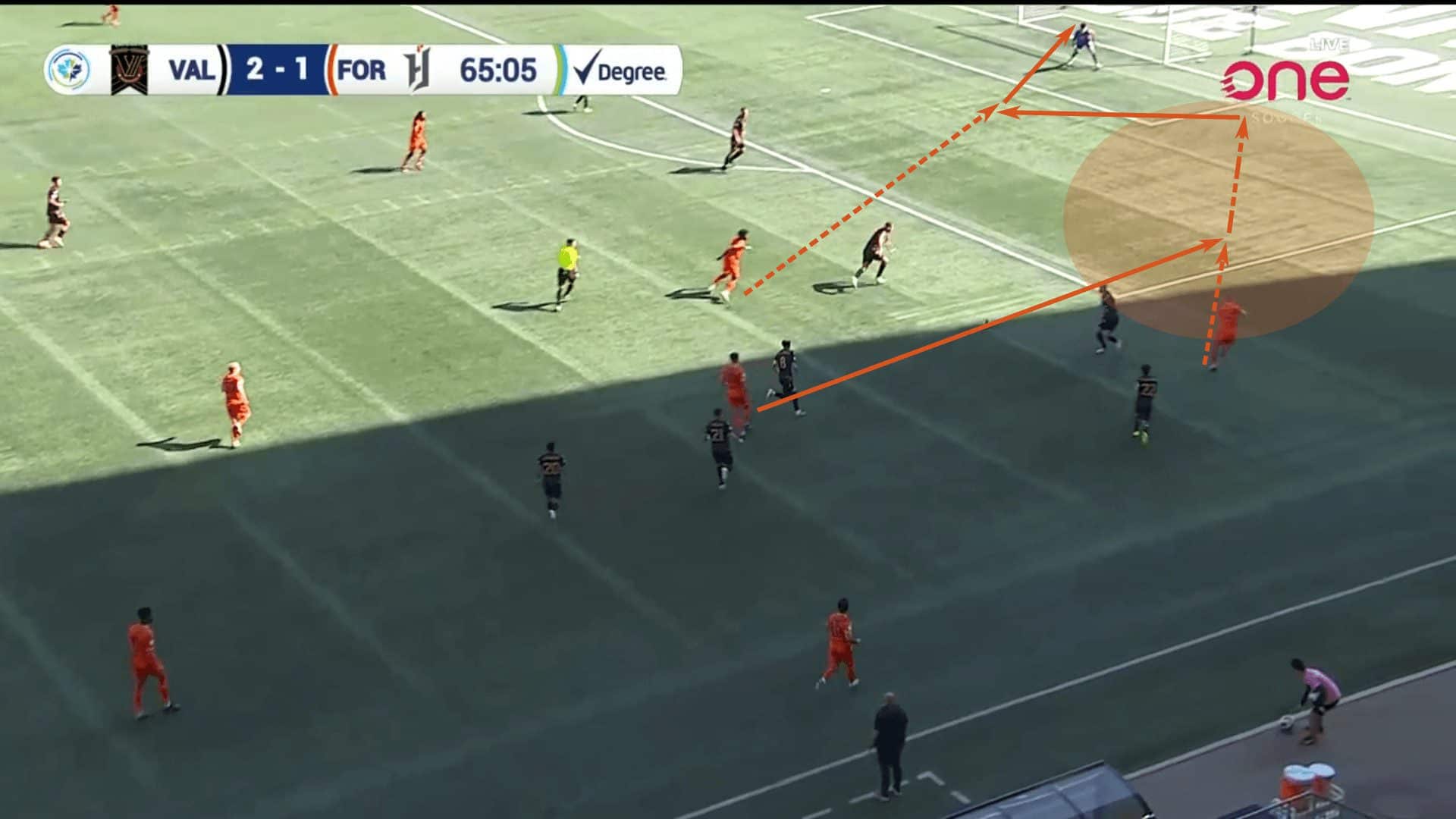
One thing Forge does exceptionally well is they get a lot of numbers in the box. They always have numbers prepared to attack crosses, allowing them to win first and second balls. They can be flat with the runs into the box, leaving space between the five attackers and the double pivot for an opposition counterattack, but their success rate in latching under the first ball. And structure at the back to limit the opposition’s success.
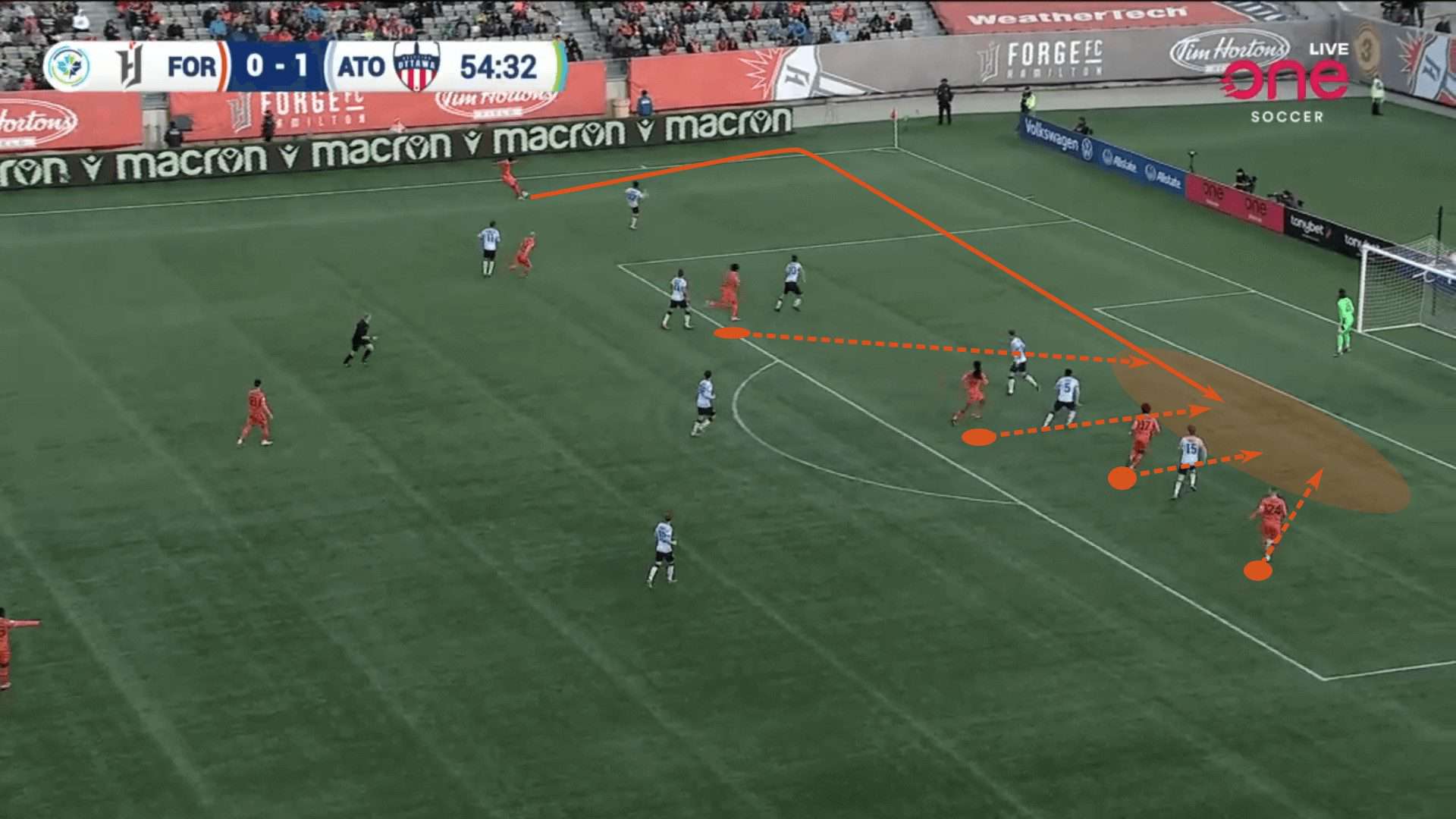
Forge led the Canadian Premier League in crosses P90 with 14.49. Looking at their crossing map, they were exceptional at sending those final balls from inside the box or outside it. They also had a penchant for early crosses, which is where the significance of that high central overload comes into play.
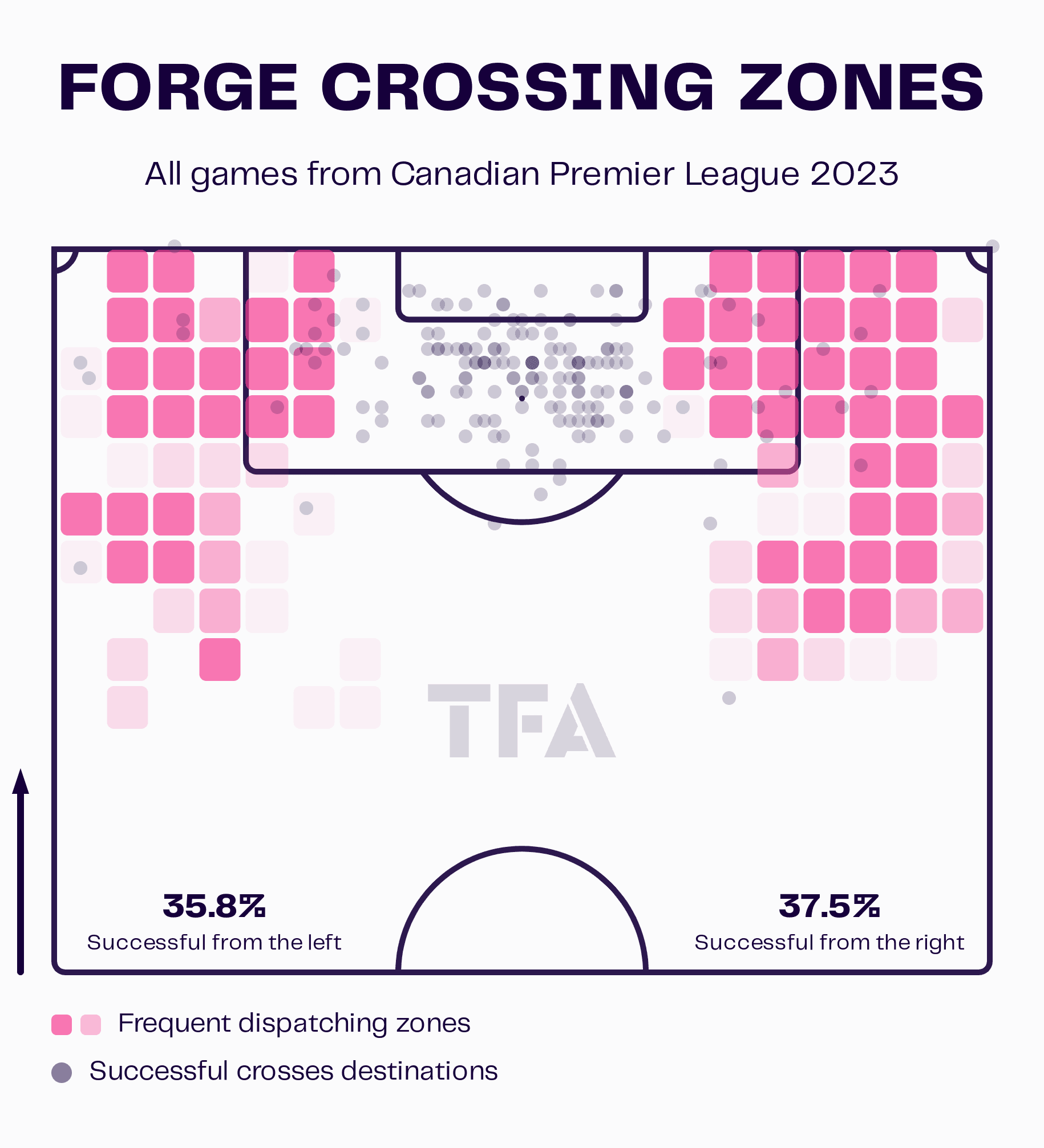
As Forge possessed in the final third, when the ball moved into the wings, the central attackers and far-sided wingback took the hint and congregated centrally. The cross was played into the box once the runners were in those high central positions.
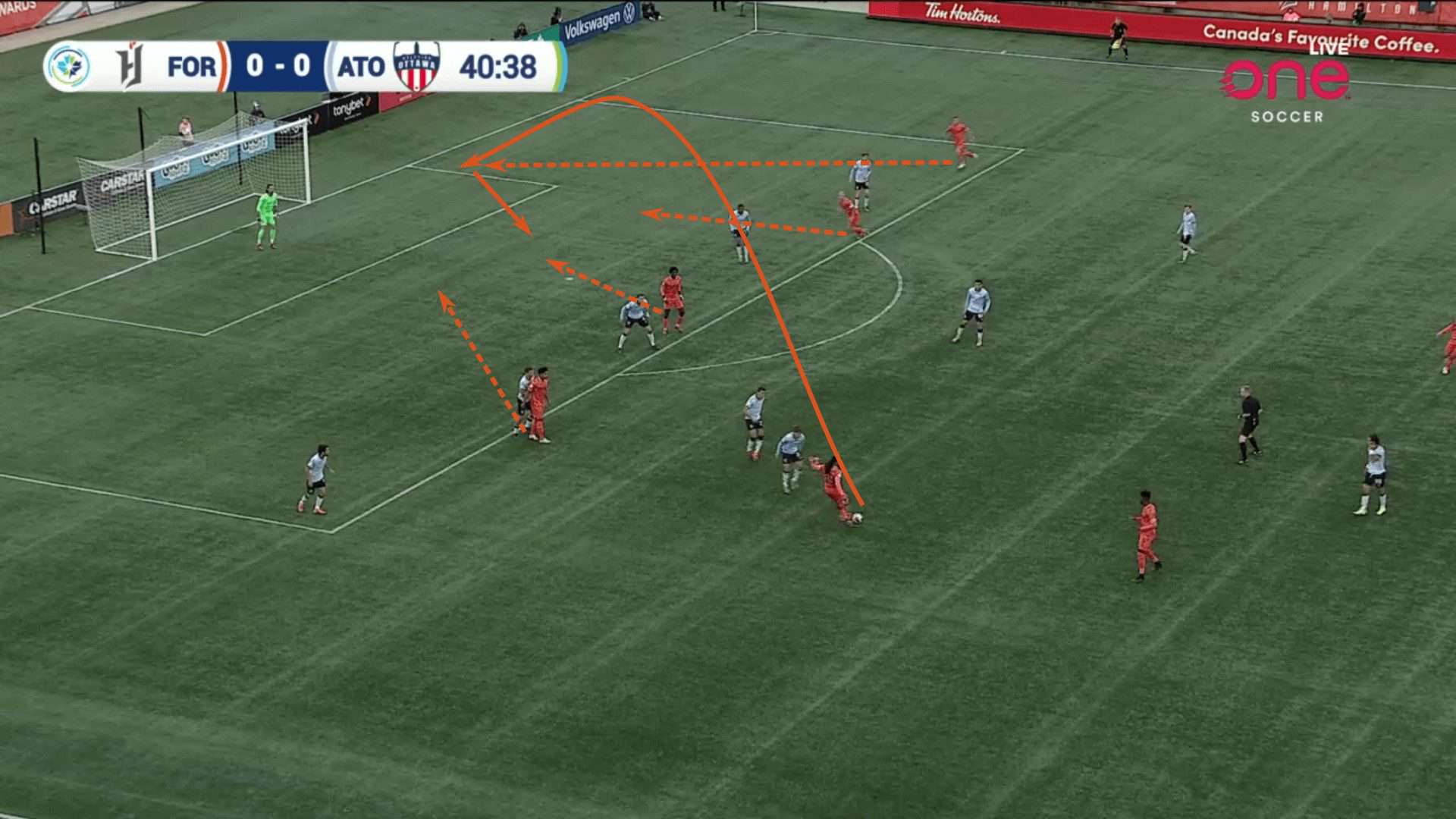
Attacking the box through crosses was a key component of Smyrniotis’ tactics, but his side was also second in the league with 6.36 through balls P90. The ability of the high central overload to manipulate the shape of the opposition’s backline gave the side flexibility as to how they attack the box.
The first goal against Valour came with a simple ball over the top. Starting from a higher position, Aboubacar Sissoko made his typical check into midfield but then burst behind his defender as he took the bait. The ball was well-weighted, and the goalkeeper caught in no man’s land as he half-volleyed the ball over the keeper and into the goal.
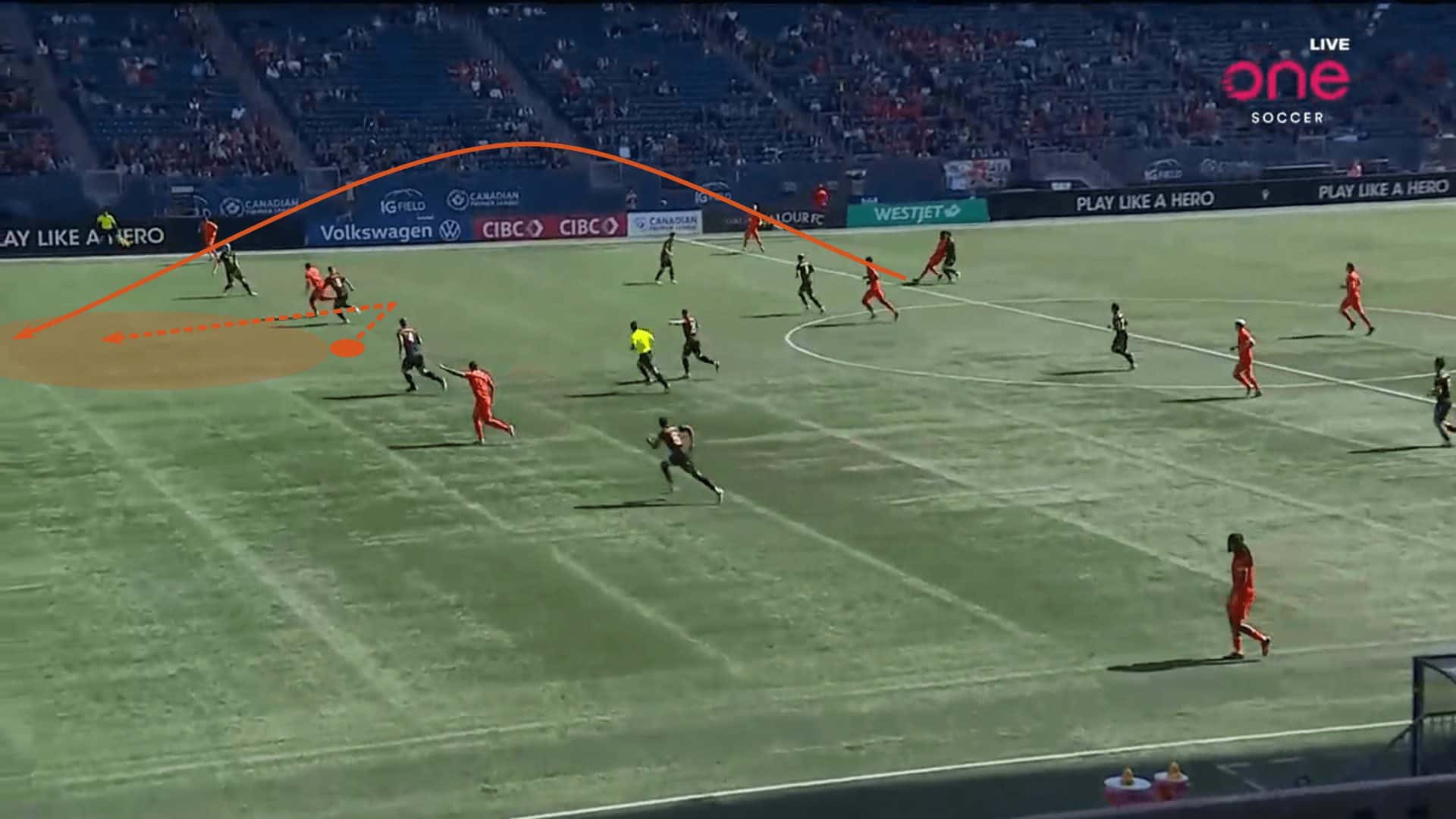
The five players in the highest line limited the number of players opponents could commit to defending in midfield, plus it stretched them from touchline to touchline. That opened up gaps for the high central overload to attack. Whether checking in at midfield or offering runs in behind, their movements were critical to Forge’s progression, even if it did ultimately come through the wings.
Once The Hammers got into the final third, they had runners prepared to attack the box. For a team that sends so many crosses into the box, they had significant success due to the number of players in high central positions prepared to contest the delivery. They were exceptional at winning the first ball and directing it on goal. It’s a side with attacking tactics that were difficult to contain.
A stingy defensive game plan
You can argue Forge has been the Canadian Premier League’s best defensive team in its short history. This side is very organised, presses well and limits opponents in transition. Those qualities typically make for a successful approach to defending.
Even here, there is some tactical flexibility. Smyrniotis could just as easily set out his side to immediately apply pressure in a high press, take up a high position but delay pressure or settle into a mid-block, especially when preserving a lead. Well-drilled in each phase, the tactical acumen of his teams helps them jump out to leads and then see out the game.
The match against Atlético Ottawa gives an example of a high press with specific instructions for pressure. As play restarts, the left-centre forward left his mark on the far side, arcing his run to take away a direct passing lane while quickly applying pressure on the central player in the back three. His pressure allowed his teammates to stay close to their marks, limiting short and intermediate options out of the press. The result was a difficult, long pass into the wings.
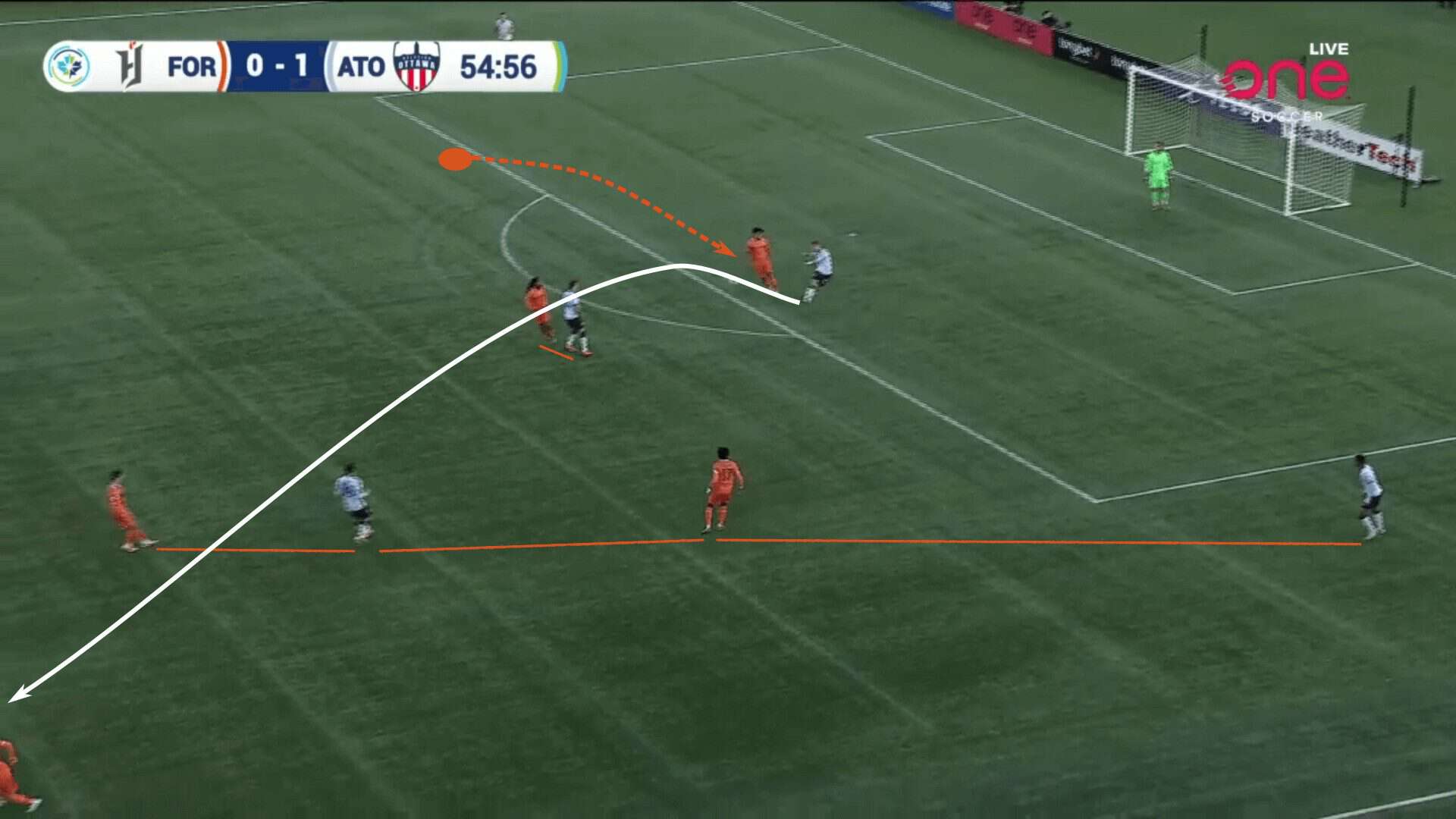
Looking at their recovery map in the attacking half of the pitch, many of the recoveries tend to come where the middle and final thirds meet. Few recoveries in the first 30 metres, but an outstanding representation in the next 20 to 30 m.
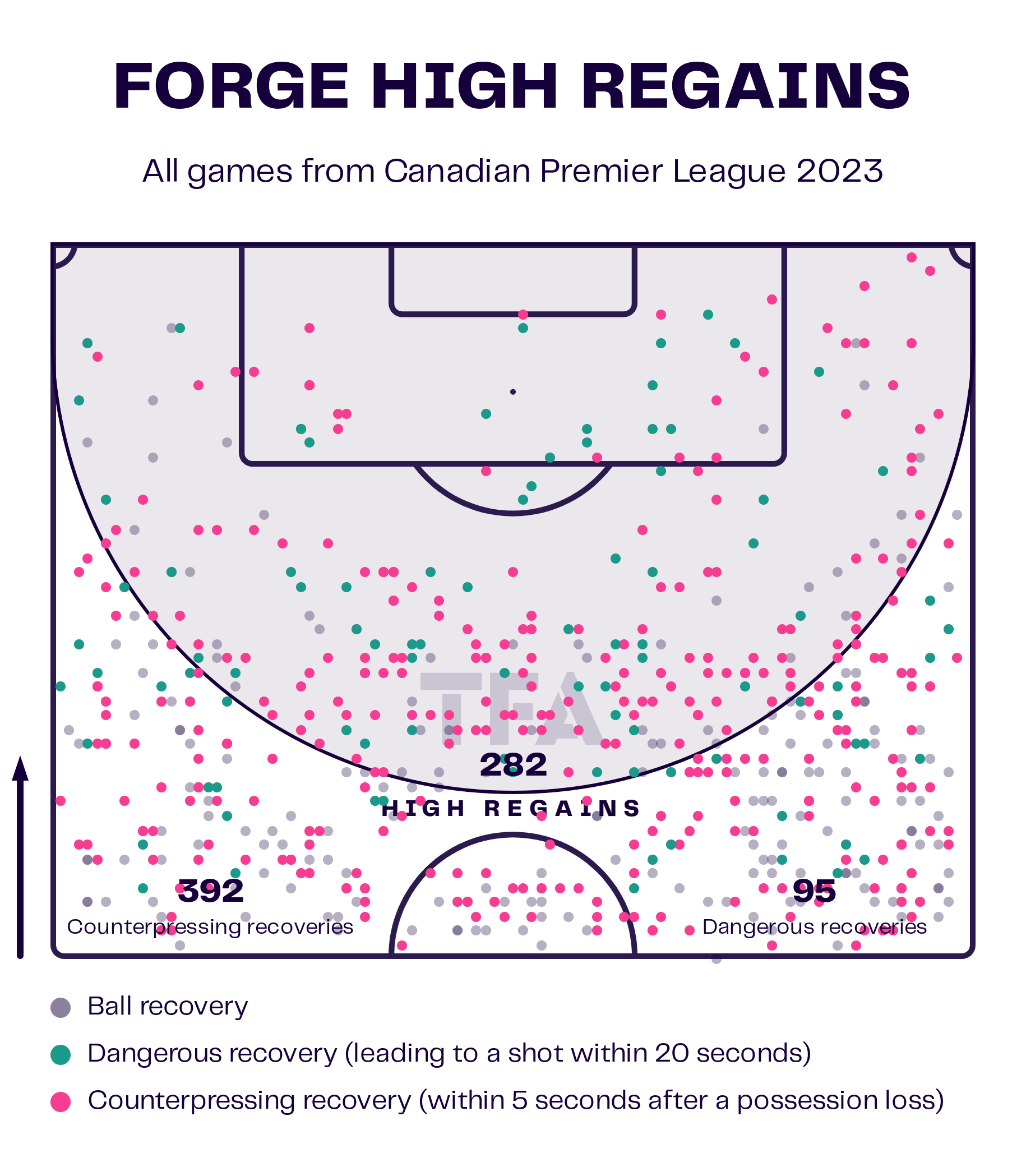
As Forge pressed, especially in their half of the pitch, a 5-2-1-2 was most common. The upside is that the two forwards and #10 could account for the opposition centrebacks and #6, but it gave an hourglass shape to the press. Opponents generally had success getting into the final third, but Forge’s setup ensured that they could contest services into the box and always had numbers centrally to win the crosses.
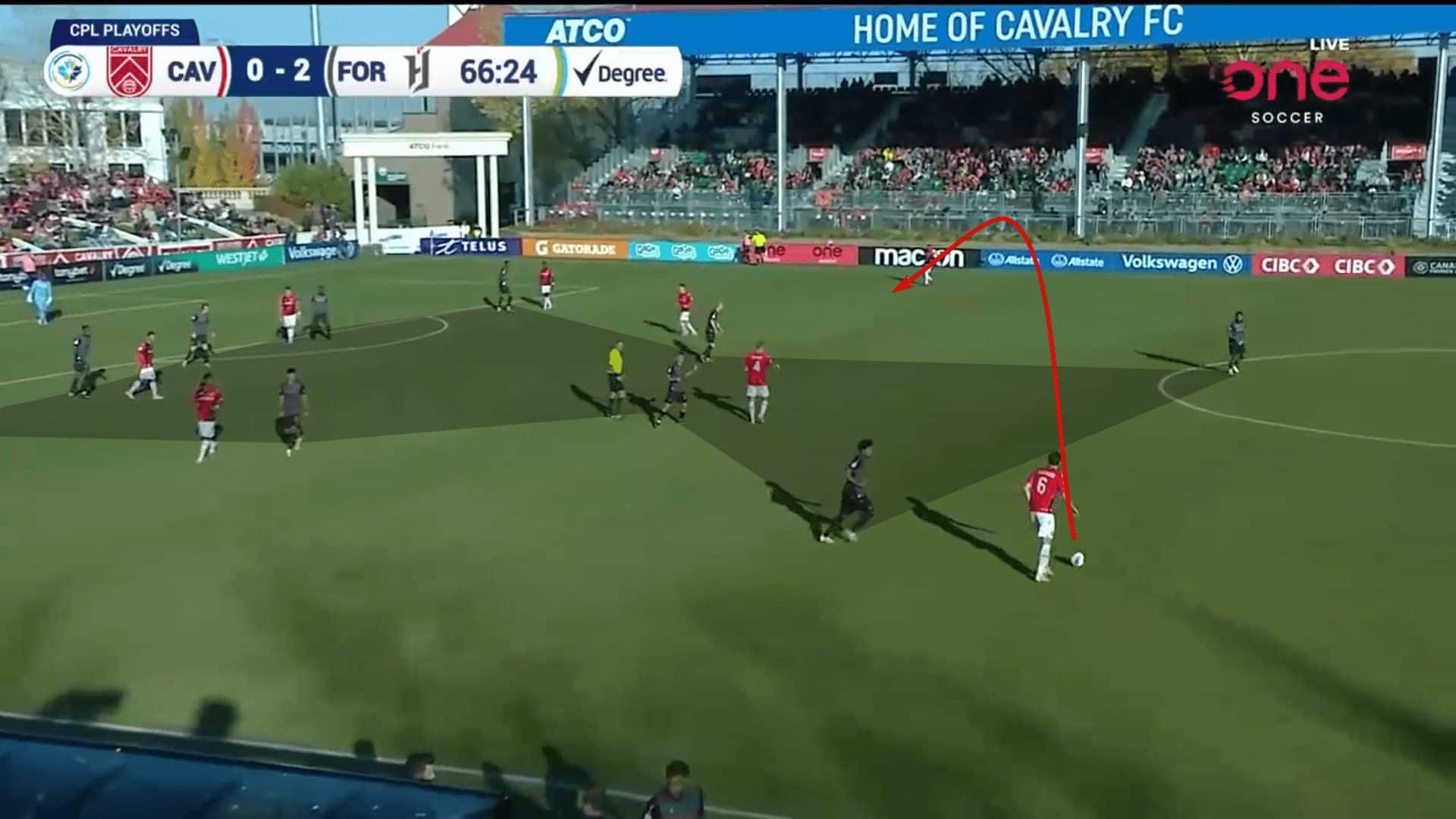
We can especially see their dominance in the low block through this final example. It’s a 2v2 out wide in the shaded area, but five Forge field players are prepared to contest the service into the box, and they have additional players outside the box ready to claim the second ball.
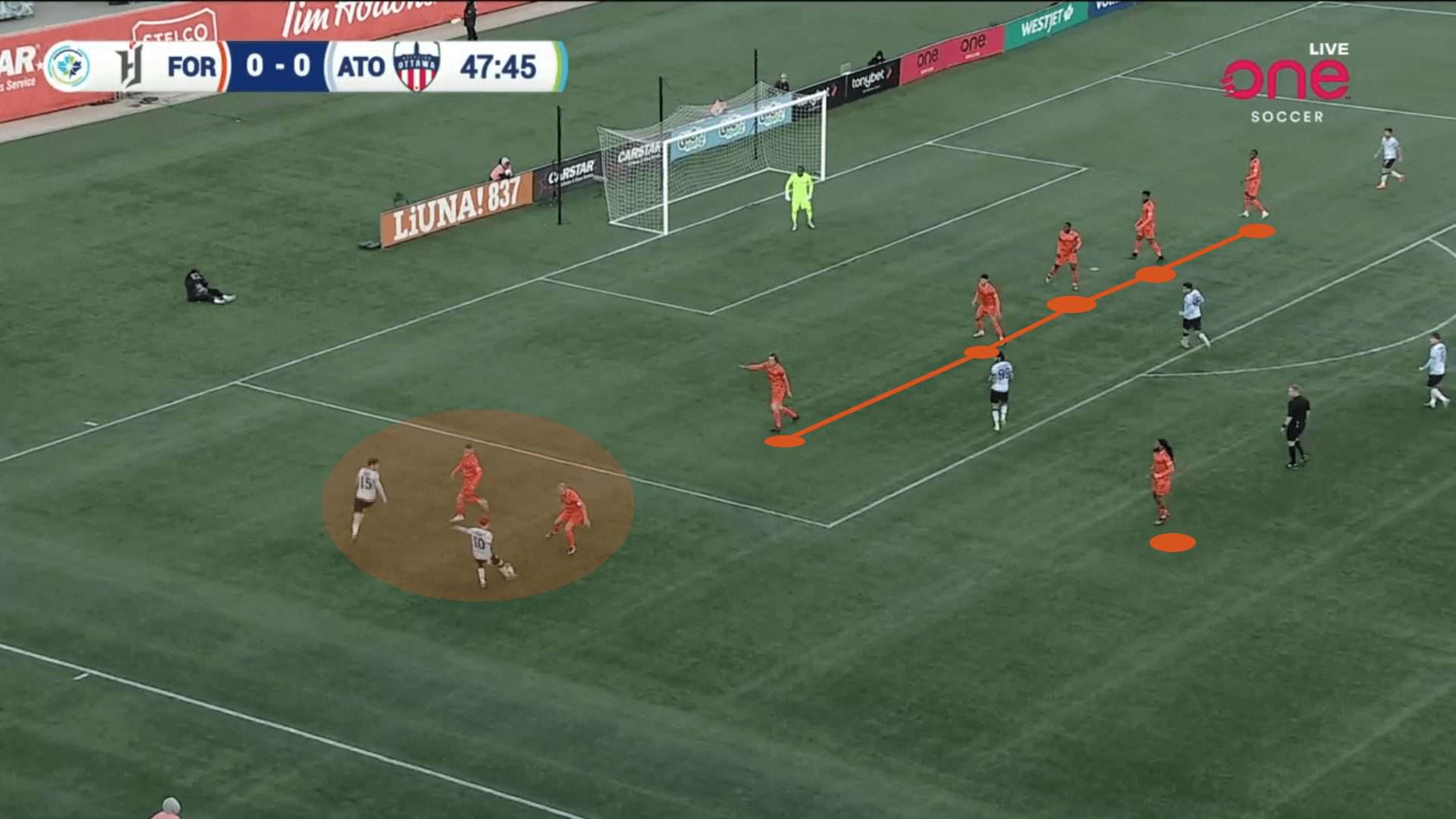
Having so many numbers back made it difficult for opponents to latch onto the ball in the box, which points to the defensive dominance of Smyrniotis’ side.
Conclusion
Given his success in the Canadian Premier League, it’s clear why Smyrniotis is heavily linked to the Canadian men’s national team job. Given that Canada is one of three host nations, a good performance at the World Cup would spark tremendous growth for the sport in this emerging football nation.
This is an essential role for the growth of the game in the country and certainly the single most crucial phase for the growth of the game in the country. Should Canada tap Smyrniotis to lead the national team, they will secure a coach who knows the Canadian players well and has the tactical flexibility necessary to lead this side in the global game’s marquee event.
Smyrniotis is one to watch in 2024. Expect his fate to be settled soon so that Forge can prepare for their regular season. January’s international window would be the perfect time for his hiring and debut as the head coach of the Canadian men’s team.
Even if the national federation moves in a different direction and Smyrniotis remains at Forge, look for him to extend his legacy as one of the top Canadian managers, past and present.





Comments